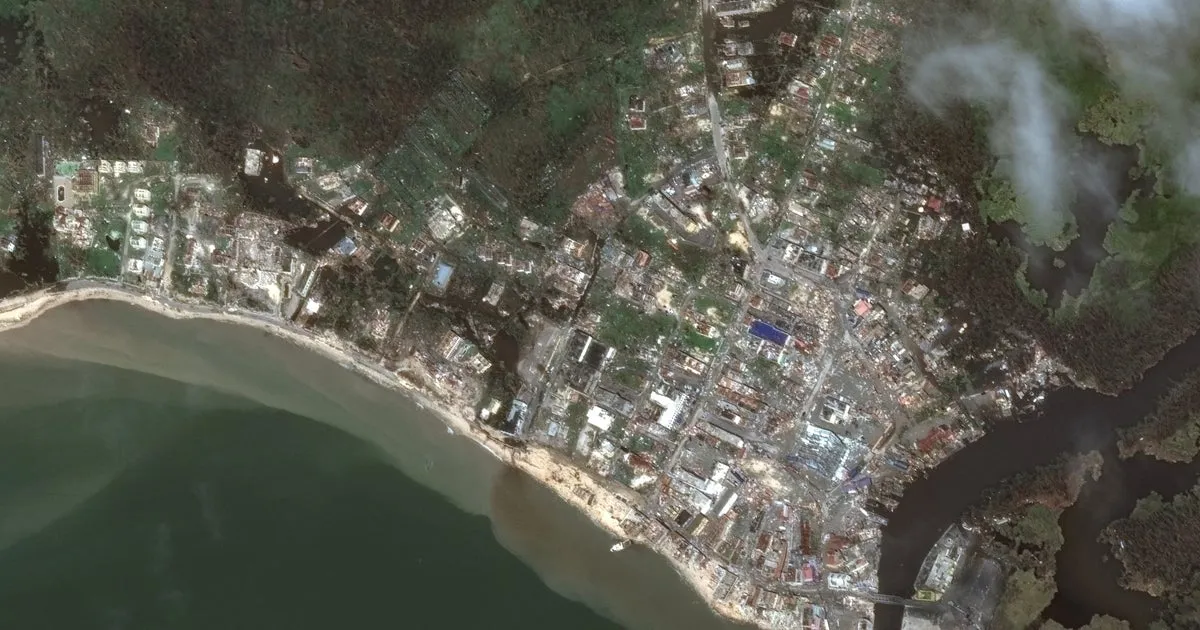
Communities across the Caribbean are grappling with the aftermath of Hurricane Melissa, which made a destructive path through Jamaica, Cuba, and Hispaniola this week. The storm's impact has left many residents in shock, and officials are currently conducting damage assessments to ascertain the full extent of the destruction.
Satellite images provide a preliminary glimpse into the catastrophic effects of Hurricane Melissa on the Jamaican coastline. Aerial photographs showcase a stark contrast, displaying the once vibrant southwestern Jamaican fishing village of White House and the nearby town of Black River before and after the hurricane's landfall. These images reveal a community that has been reduced to dirt and rubble, highlighting the severe consequences of this natural disaster.
Melissa made landfall in Jamaica on Tuesday, marking it as an extremely powerful Category 5 hurricane. This storm is recorded as the strongest hurricane to ever hit Jamaica, surpassing previous records due to its exceptional winds and pressure. At its peak, Melissa's maximum winds reached an astonishing 185 mph as it struck the southwestern coast of Jamaica. Even after making landfall, the storm's winds remained significantly above the 157 mph threshold required to classify it as a Category 5 storm, according to the Saffir-Simpson Hurricane Wind Scale.
The human toll from Hurricane Melissa is tragic, with at least four fatalities reported in Jamaica. Desmond McKenzie, the local government minister, confirmed in a statement released on Wednesday that police discovered the bodies of these individuals, who were swept away by floodwaters, indicating they were direct victims of the hurricane. In addition to the loss of life, the storm has displaced more than 25,000 people, forcing them to seek refuge in shelters across the island.
The impact of Hurricane Melissa has also caused significant disruptions to essential services. Dana Morris Dixon, Jamaica's education minister, reported that 77% of the island was without power the morning following the storm. Furthermore, Richard Thompson, acting director-general of Jamaica's Office of Disaster Preparedness and Emergency Management, indicated that officials are facing considerable challenges in conducting damage assessments. This is primarily due to a total communication blackout in certain areas, complicating efforts to provide aid and restore normalcy.
As Jamaica and other affected regions begin the long process of recovery, the community's resilience will be tested. The devastation wrought by Hurricane Melissa underscores the importance of disaster preparedness and the ongoing need for support in recovering from such extreme weather events.